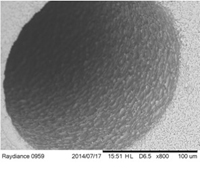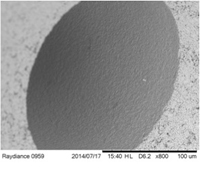31 May 2016
Case study from Coherent: ultrafast lasers enable greener automobiles
Governments throughout the world are adopting more stringent automobile emissions standards to lower air pollution and reduce air quality related health concerns. For example, in the European Union, adoption of the EU6 standard for exhaust emissions (including particulates) started in 2014, and will be completed by 2017. In response, automotive manufacturers are developing novel designs and manufacturing technologies to yield cleaner, greener engines.
For gasoline direct injection (GDi) engines, the fuel injection system has a significant impact on the mixture formation and its homogeneity. This, in turn, impacts particulate emissions. Researchers at Delphi Automotive have shown that innovative fuel injector nozzle hole shapes can improve mixture formation and combustion dynamics, and hence reduce particulate emissions.
Specifically, the investigation at Delphi Automotive showed that a nozzle configuration consisting of four tapered slots resulted in a long, planar fuel plume having a thin aspect ratio. This pattern exhibited substantially improved emissions characteristics over round holes, and shows the potential of novel shapes.
Unfortunately, EDM cannot easily create non-round holes. In order to realise these geometries, Delphi employed a Raydiance (now Coherent) R-200 femtosecond laser. This acts as a superior alternative drilling tool that can enable precision machining of these slotted holes on a production basis.
The underlying reason that the ultrafast femtosecond laser produces superior results is that it removes material in a cold “athermal” process. This delivers a better surface finish and improved reliability over EDM, plus sub-micron resolution, no thermal damage to the material, and no recast debris. Delphi also notes that the femtosecond laser produces holes with sharp entrance and exit edges. This helps to atomize the fuel and produce a consistent plume, all of which improve engine emission characteristics. The femtosecond laser also introduces less heat into the part and offers increased ablation efficiency as compared to picosecond (~10 ps) lasers, which are also currently used in production to drill high precision GDi holes.
The success of this study indicates that new nozzle hole shapes will almost certainly come in the future, and ultrafast lasers will enable their reliable production on an industrial scale.
Image: The EDM (left) drilled hole shows greater surface roughness than the femtosecond (right) drilled hole.
- Contact Information
- Name: Petra Wallenta
- Email: Petra.Wallenta@coherent.com
- Website: www.coherent.com



